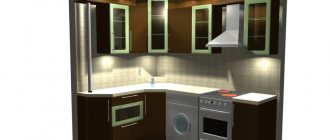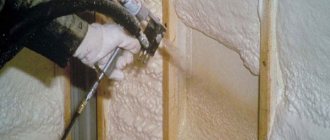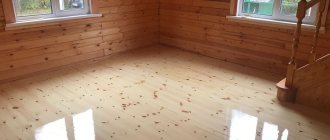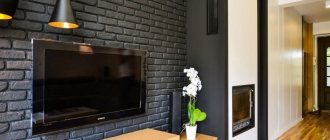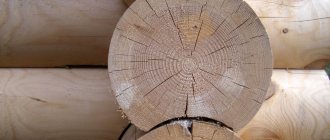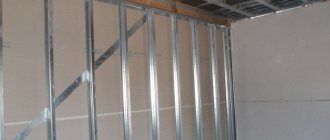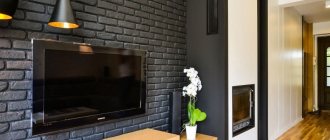A typical situation is when you moved to another apartment or your neighbors have changed and now you don’t know what to do so as not to hear the neighbors behind the wall. To some, this problem may not seem significant. But this is until you find yourself in such a situation.
In fact, the issue is important, complex and not so easily resolved if you don’t know how to deal with it correctly.
I don’t want to exaggerate, but the discomfort caused by high audibility in an apartment is a really serious problem that can negatively affect not only your mood, but also your health. I will not dwell on this in detail, but this is a proven fact.
So, how can you effectively, not very expensively, and on your own, get rid of excess noise in your apartment and finally get the opportunity to rest normally?
This is exactly what we will talk about in detail in this article.
Soundproofing an apartment using various materials
All people need a cozy rest after a hard day at work, but often noisy neighbors do not allow a person to rest properly. Therefore, any apartment needs high-quality sound insulation. At the same time, you need to know how to soundproof your apartment from neighbors and protect yourself from stress.
How does sound insulation work?
Sound insulation works in two directions:
- Soundproofing. Sounds entering the apartment are reflected, so living in it is calm and comfortable.
- Sound absorption. All sounds coming from your apartment are suppressed, so you will not disturb other residents of the house to relax and work.
Types of noise
Noise is divided into three types:
- Air. It spreads in the air, for example, during people talking.
- Shock. It is formed as a result of the work of construction equipment (perforators, pile drivers, etc.). This is the most unpleasant type of sound, and it is heard at a great distance from the sound source.
- Structural . This noise is caused by vibration. For example, it is published by industrial equipment.
Structural and impact types of noise cause the most problems. Residential premises have great demands on the quality of sound insulation, because they must be well protected from all types of noise. A lot of noise at home and at work always causes fatigue and irritation in a person, and with prolonged exposure it can cause serious nervous diseases in people. Therefore, complete soundproofing of a room or apartment will help protect people from noise and illness.
Permissible noise standards
Current noise standards for residential premises:
- During the day (from 7 am to 11 pm) the noise level should not be higher than 55 dB.
- At night (between 11 p.m. and 7 a.m.) the noise level should not be higher than 45 dB.
The source of noise can be external or internal.
In the first case, noise sources can be: various types of transport (road, rail, etc.), enterprises, construction sites, etc.
Sources of internal noise are: ventilation systems, elevators, water pipes and other life support systems used in residential buildings.
Sources of noise can also be shops, workshops, offices, etc. located on the lower floors of buildings.
If the source of the noise is known, then you need to figure out how to make soundproofing in the apartment with your own hands.
Soundproofing base
This design is sometimes called a “floating floor,” emphasizing the separation of the finishing surface and the interfloor panel. The sound insulation functions in it are performed by rigid slabs made of ecowool, mineral wool or extruded polystyrene, as the most suitable for this purpose. They are laid on a leveled base over a waterproofing membrane, and the perimeter of three to five centimeters is filled with soft stone wool.
A protective leveling screed with a thickness of one and a half to five centimeters is applied on top of the insulating slabs, on which the clean floor is mounted. This coating effectively dampens the energy of sound waves, although polystyrene is often mistrusted, considering it more of a heat insulator.
Sound insulation with bulk material, dry screed.
Good performance is provided by bulk materials, among which expanded clay of small and medium fractions is the leader. It is used to create a base for a screed, as a sound and heat insulating backfill between joists and for installing floors on a dry screed. An alternative to expanded clay is perlite or vermiculite, traditionally used for insulation and insulation of floors.
How to soundproof an apartment?
Reliable sound insulation of a room is provided by thick walls and interfloor slabs. In old high-rise buildings, there was practically no sound insulation, so many residents of panel houses independently protect their apartments from noise. This is done by insulating all structural elements (walls, ceilings and floors) with a variety of sound-absorbing materials.
All apartment owners need to know that sounds enter the room through:
- sockets and distribution boxes;
- plumbing and heating system;
- joints and cracks;
- windows and doors.
It is because of this that all the elements described above need to be soundproofed.
Myths and reality of acoustic plaster
Some people praise it, while others call it ineffective, accusing manufacturers of quackery. We can say that the truth is somewhere in the middle. Sound insulation under plaster will not completely protect against noise, but it will be insignificant and will no longer be perceived as an irritating factor.
Soundproofing materials are presented in a wide range. Experts advise purchasing them from reliable, well-established suppliers who are ready to provide certificates for their products.
Source
Materials for soundproofing an apartment
The method of soundproofing rooms in apartments depends on the chosen material, which is often used as plasterboard, panels, mineral wool and rolled materials.
Harsh sounds irritate people, so they cannot concentrate on any work or problem. Therefore, only good soundproofing of the apartment will restore peace and comfort in it.
The first step in soundproofing an apartment with your own hands is to identify the source of the noise, after which a more effective method of absorbing it is selected. In many cases, it is enough to soundproof the ceilings and floors, but in some situations, vibration insulation of the apartment is also required.
If you have no idea how to soundproof an apartment, then below are the most popular materials.
The most popular soundproofing materials are:
- Mineral wool. Absorbs 95% of noise, including impact noise. It is most suitable for walls because there are no gaps or cracks on them. But the size of the room should allow the use of this material, because as a result of such soundproofing of the apartment, its usable area will decrease.
Advantages:
- does not burn;
- considered universal;
- has a long service life.
Minuses:
- absorbs moisture. Therefore, do not use in damp and damp areas;
- it is often necessary to lay several layers;
- Cork covering. This is a natural and environmentally friendly material, therefore it is widely used for soundproofing in apartments.
Advantages:
- moisture resistant;
- large selection of colors;
- environmentally friendly;
- resistant to fungus and mold.
Minuses:
- expensive;
- burns;
- afraid of mechanical impact;
- fades from sunlight;
- difficult to dismantle.
- Thermosound insulation. This sound and noise insulation material is three-layer. Inside the material there is fiberglass, which is covered with propylene on the outside. It has a high density, so it is suitable for soundproofing in an apartment.
Advantages:
- environmentally friendly;
- easy to install and fasten;
- does not burn;
- not afraid of moisture and high temperatures;
- has low thermal conductivity;
- not afraid of rodents and insects.
Minuses:
- labor-intensive installation;
- not suitable for ceilings.
- Polyurethane foam . It is an excellent sound insulator. Thanks to the grooves, it is possible to ensure good adhesion and fit of the material. Suitable for ceilings and walls.
Advantages:
- not afraid of fire;
- non-toxic;
- does not absorb moisture;
- neutral to acids and alkalis;
- weighs little;
- long service life.
Minuses:
- exposed to sunlight;
- must be applied to a dry and heated coating;
- darkens during use.
- Isoplat. This is a natural material made from wood. One side of the material has no roughness, which speeds up the installation process. Thanks to the unique texture, the walls will be smooth. Suitable for ceilings and floors in apartments.
Advantages:
- environmentally friendly;
- gives strength and rigidity to the structure;
- long service life;
- simple and easy to install;
- can be cut with a knife without much difficulty.
Minuses:
- expensive;
- difficult to find in stores;
- exposed to moisture.
- Craft. Excellent noise absorption up to 23 dB. Thin (thickness 1.2 cm), which makes it indispensable for apartments. Sticks directly to walls. Suitable for all apartments. But you need to know how to properly soundproof an apartment using this material.
Advantages:
- weighs little;
- lasting;
- inexpensive;
- easy to use;
- does not require lathing;
- ecologically pure.
Minuses:
- cannot be used in wet areas;
- burns;
- often chewed by rodents.
- MaxForte SoundPRO. This material is produced in the form of rolls. Thanks to it, the apartment will be reliably protected from impact and airborne types of noise. But you need to know how to soundproof your apartment from neighbors using this material.
Advantages:
- thin;
- can be used on walls, floors or ceilings;
- resistant to fungus and mold;
- environmentally friendly;
- easy and simple to install;
- does not burn;
Minuses:
- cannot be purchased by meter;
- difficult to purchase at retail outlets because it is mainly sold by the manufacturer;
- high price.
- ZIPS. The wall is not equipped with a frame, since the sandwich panels are attached directly to the surface.
Advantages:
- quick and easy to install;
- fire resistant;
- environmentally friendly;
- neutralizes vibration;
- finishing can be used.
Minuses:
- can only be mounted on a perfectly flat surface;
- it is difficult to lay wiring and install sockets;
- inconvenient to use because it is not able to withstand a weight of more than 5 kg;
- there are a lot of fasteners, which has a bad effect on its soundproofing characteristics.
- Texound. This is a new soundproofing material consisting of felt and polymer. All types of material from this brand are considered universal because they can be used in soundproofing floors, ceilings and walls. But you need to know how to soundproof a room using this material.
Advantages:
- thanks to its small thickness (3 mm), it is possible to preserve the usable area of the premises;
- flexible. With its help you can perform circular insulation;
- absorbs sounds from 28 dB;
- used in everyday life and at work;
- does not collapse;
- not afraid of moisture and temperature changes;
- long service life.
Minuses:
- long sheets - 5 m;
- To cover the walls you need to level them with a primer.
- Acoustic foam. This is the best sound insulation because it allows musicians to work comfortably at home or in an apartment. Produced on the basis of PPU foam. Thanks to the different relief surfaces, it is possible to give the room a beautiful design.
Advantages:
- attractive appearance;
- harmless to people;
- comfortable at work.
Minuses:
- expensive.
This unique rating shows the popularity of soundproofing materials. Using modern materials to absorb noise in an apartment means making it quiet and cozy.
Attention! The question of what sound insulation to choose for an apartment needs to be approached comprehensively. This is due to the fact that all structural elements have their own characteristics (load-bearing or not, humidity level, etc.).
Soundproofing substrates
This group of building products allows you to increase the insulating properties of the coating in a panel house without completely dismantling existing structures. Due to their small thickness, the materials do not cause the floor level to rise above the permissible level. Depending on the type of finishing layer, acceptable height, and acoustic characteristics of the substrate, a product with suitable parameters is selected.
Roll and slab substrates based on natural cork are popular. In addition to environmental friendliness, durability, and immunity to moisture, they successfully combine low thermal conductivity with the ability to absorb acoustic vibrations. A tangible result is achieved by using modern multi-layer products, for example, a felt coating reinforced with a polymer base.
Natural cork backing.
Cheap and relatively effective materials include substrates made of soft wood-fiber boards; despite the name, the material is not subject to deformation, maintaining its original thickness under load, which allows it to be used under type-setting and panel parquet and laminated coverings. The choice of soundproofing substrates in the retail chain is significant; manufacturers are constantly expanding their range of products, but when purchasing them, one must not forget that, despite advertising promises, the capabilities of thin materials are limited, although often sufficient.
Soundproofing walls in an apartment
Soundproofing walls is always done in stages. First you need to decide exactly which room needs to be soundproofed and with what material. If the noise comes from below, then the floor needs to be protected from noise. Sometimes it is necessary to protect the entire apartment from noise.
Preparing the walls
Before soundproofing the walls in an apartment with your own hands, you must first complete the following preparatory work:
- They find defects on the walls to identify vulnerable spots.
- Then they are sealed with putty so that they absorb sound well.
- They perform sound insulation and sealing of heating pipes in places of contact with walls. This requires a sealant.
Before performing soundproofing work, be sure to turn off the electricity to de-energize sockets and switches. The holes for them must be well insulated with mineral wool or fiberglass, after which the sound insulation in the cavities is sealed with cement mortar.
After all the preparatory work has been completed, you can begin soundproofing the walls. If you don’t know how to soundproof a room, then you need to start working on the walls. The work procedure is described below.
The procedure for soundproofing apartment walls made of different materials
The sequence of soundproofing walls directly depends on the type of insulating material.
Lathing installation:
- Installation of sheathing. Regardless of what it is made of (wood or iron), you need to attach the sheathing to the wall with self-tapping screws. The distance between the sheathing elements must be at least 50 cm.
- Filling the sheathing. During work, it is necessary to avoid the formation of voids between the walls and sound insulation, otherwise noise will be poorly absorbed. The following soundproofing materials are most often used: mineral wool, foam and cork.
- Closing the frame. Many people use drywall, which is attached to the frame with self-tapping screws. The drywall sheets are flat and large, so there will be few seams on the walls. It can be moisture resistant, so it can be installed in damp areas.
Soundproofing walls with liquid materials
Liquid insulating material penetrates well into cracks and fills all wall cavities, which creates a high-quality sound insulation layer in the premises.
The liquid material is evenly applied to the walls, then facing work is performed. First of all, seal the joints with putty, if any (when using liquid polyurethane foam, the wall will be without joints). This soundproofing of walls and ceilings will make the room quiet, airtight and warm.
Plasterboard construction
To protect walls from noise with plasterboard, the following building materials are required:
- wooden blocks or iron profiles for reliable fixation of drywall;
- hardware for fastening the sheathing;
- soundproofing boards or rolled materials;
- self-tapping screws;
- drywall.
Soundproofing a room with plasterboard looks attractive.
Installation
The first step is to cover large cracks and depressions with putty. Then they assemble and install the frame for plasterboard sheathing. The profile does not need to be immediately fixed to the walls; it is necessary to lay an anti-vibration rubber or cork gasket 2 cm thick between them.
After arranging the sheathing, it is filled with mineral wool or glass wool. When choosing a suitable sound-absorbing material, you need to pay attention to the level of sound absorption, which is greater for soft materials. It is with their help that the desired effect can be achieved.
Next, the drywall is attached to the frame.
At the final stage, the joints are sealed with putty and mesh. Then they paste wallpaper or cover the walls with paint.
Calculation of the cost of materials for sound insulation
When calculating costs, take into account:
- The price of drywall is 100 rubles/m2;
- The cost of soundproofing material is 70-450 rubles/m2.
You also need to add to these costs the price of screws and lathing.
Decorative panels
There are several types of these panels. When the walls are not level, the panels are attached to the sheathing with liquid nails and connected to each other using the tongue-and-groove technology. Thanks to this, this method of soundproofing rooms is considered simple. The panels are made from paper and fabric, so they are environmentally friendly and look attractive.
In terms of soundproofing characteristics, they are no worse than drywall. They also weigh little - the panel weighs approximately 4 kg, which makes them easy and quick to install.
This sound insulation is ideal for protecting the entire apartment. Decorative panels will also improve the interior of the room, although the usable area of the room is slightly reduced. For example, soundproofing a ceiling using multi-colored panels looks very beautiful.
These panels cost about 750 rubles.
If you have no idea how to improve sound insulation, then decorative panels would be a good option.
Gluing roll sound insulation to the wall
This method is simple and accessible. The backing is glued using vinyl wallpaper adhesive.
Such moisture and sound insulation is used in cases where they do not want to spend a lot of money on repairing their rental property. The effectiveness of this method is low, since noise is reduced by 40-50%.
On average, rolled soundproofing materials for walls and ceilings cost about 1,300 rubles per roll.
Soundproofing the ceiling in an apartment
Sound insulation of the ceiling should be made of lightweight materials that do not peel off from their own weight.
If the ceiling is suspended, you will need to remove the panels and attach insulation to the main ceiling, then put the panels back.
You need to remember the main condition - soundproofing the ceiling should be carried out before finishing work, and not after completion of the repair.
Other ways to insulate the ceiling from extraneous noise
Ceilings are also insulated using an acoustic stretch ceiling. It has been gaining great popularity in recent years. This is achieved through perforated fabric, which has unique noise insulation parameters. This ceiling soundproofing will allow you to forget about the screams of your neighbors.
Soundproofing of walls and ceilings is also done using cork materials, which are in great demand. This is due to the fact that their structure perfectly absorbs sounds.
Complete sound insulation systems
This type of sound insulation consists of several sound-proofing materials of different types, so this method is considered a combined one. Most often, sound-absorbing boards, rolled materials and membranes are used simultaneously, which significantly increases the quality of sound insulation.
Recently they began to produce a new type of soundproofing boards mounted on top of ceiling systems. Such ceiling sound insulation suppresses external noise and sounds emanating from the home.
The choice of comprehensive sound insulation systems is very extensive, so you can choose a suitable system for almost any room.
If you don’t know how to make good sound insulation in an apartment, then thanks to the combined approach this question will disappear by itself.
Soundproofing doors
This is a fairly pressing issue for all apartment owners, since in high-rise buildings little attention is paid to sound insulation. Small staircases and thin walls and doors do not allow noise protection from the home. There are several ways to ensure peace and comfort in your apartment. Firstly, you can change the doors in your apartment to multi-layer models. Secondly, you can place high-quality soundproofing materials in the door with the required level of noise reduction.
If you don’t know how to soundproof doors, then the following soundproofing materials can be installed inside them:
- Foamed polyurethane. It is an excellent sound insulator that does not allow various noises to pass through. It is characterized by fire resistance. It fits well to the doors, so it retains not only sounds, but also heat.
- Styrofoam. It weighs little and does not produce noise, but ignites quickly.
- Mineral wool. The most effective sound insulator with high fire resistance. But it quickly absorbs water and settles under its mass.
- Corrugated cardboard. The most inexpensive material, but its soundproofing qualities are poor.
Metal-plastic doors are often equipped with thresholds and many other sealing elements, thanks to which they adhere to the door frame and there are no gaps. Expensive doors are often trimmed with artificial leather, which is a good sound insulator.
Door soundproofing options
Soundproof doors in an apartment using:
- Arrangements of vestibules
Metal is a poor sound insulator, while wood has higher sound insulation parameters. That's why many people install double models. In this case, one door is external (most often made of iron, since it must reliably protect the apartment from uninvited guests). The other door is considered an internal door, which is most often made of wood. Between these doors there is a space that acts as insulation.
- Use of sound-absorbing materials
A sealant made of sound-absorbing materials is glued around the perimeter of the door frame. If there are many of these circuits, then this creates more effective sound insulation.
Now you can buy several types of such contours:
- Silicone. They are mounted in the grooves of the frame or in the door using a special rib (attached to the side).
- Made from foam rubber . It has an adhesive base, which allows you to quickly isolate the front door from noise.
- Magnetic. Thanks to them, the door fits more tightly to the frame, which allows you to effectively protect your home from noise.
- Door trim
Quite recently, batting upholstery was considered a very popular soundproofing option for doors. Some even trimmed the doors with old warm blankets, which were covered with leather substitute on top. Now upholstery materials for soundproofing doors are mainly represented by isolon and padding polyester. In this case, the door is upholstered in several layers, on top of which leatherette or leatherette is attached for a more attractive appearance of the door.
Door soundproofing is also done using decorative panels and thresholds.
Interior doors are not required to have good soundproofing properties, because their main purpose is to provide household members with a comfortable indoor life (sleep peacefully, watch TV, etc.).
There are also a lot of materials for doors, but the most common are:
- wood of different species;
- Fiberboard;
- iron;
- plastic;
- slabs of mirrors and glass.
Often interior models are made from fiberboard. They can be solid or hollow; in the latest models, the voids are filled with soundproofing material. Doors with glass elements, as well as hollow models, have little sound insulation.
It is best to choose solid wood models, since sound quickly travels from one room to another through plastic and glass.
Nowadays you can also buy effective sound-absorbing doors made using sandwich technology. If you put them in boxes with rubber thresholds, the degree of sound insulation can be increased to 26 dB. But such models look ugly.
What is sound insulation made of?
Sound insulation for doors can be made from the following materials:
- Foam rubber.
- Sintepon.
- Mineral wool.
- Izolon.
- Polystyrene.
- Styrofoam.
When choosing an insulating material, all its properties must be taken into account. There are materials that shrink and need to be changed after a while. Because of this, it is more advisable to choose expensive and effective insulation materials.
For one-piece models, it is allowed to use car sound insulation. Such materials are vibration filter and Splen. The first material is self-adhesive; for this purpose it has a tar base. It also has a foil gasket. This insulating material has good sound insulation. The first layer of multi-layer sound insulation is made from it. Splen also has good noise-absorbing and heat-insulating qualities.
Attention! Polyurethane and corrugated cardboard cannot be used as soundproofing for doors. Polyurethane cannot be repaired and is difficult to apply. Corrugated cardboard has little noise absorption and has a short service life.
How to properly soundproof doors with your own hands?
You can soundproof any door yourself quite quickly, since you don’t need any special knowledge or tools. You just need to do the soundproofing in the apartment with your own hands correctly and efficiently.
The most important thing is to choose the right soundproofing method for the door, the list of which is given just above. If the door consists of several layers, then it can be disassembled and soundproofing material can be placed in the voids. It is better to buy soft and bulk materials for this. For additional sound insulation of the door, you need to lay a high-quality seal around the perimeter of the frame. It is better to cover the front door with rolled soundproofing material.
Reviews about any type of sound insulation can be read on online store websites and thematic resources. Which sound insulation is best is up to you to decide.
The best materials for sound insulation
Wallpaper backings: types and installation features



